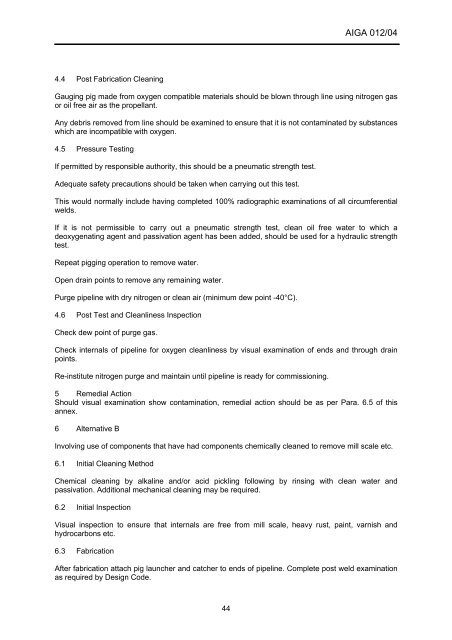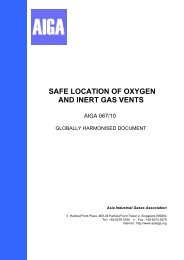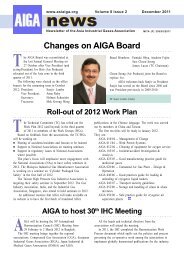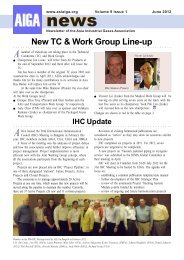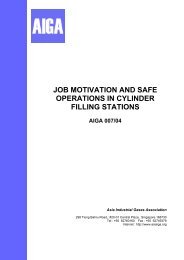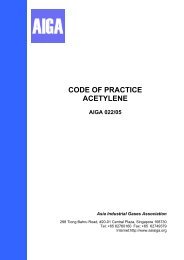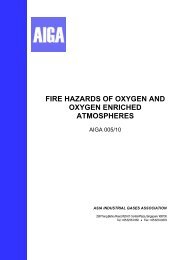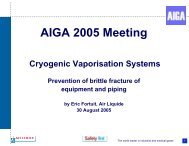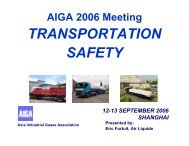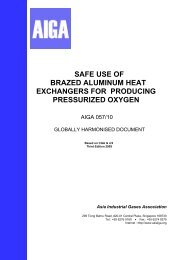CLEANING OF EQUIPMENT FOR OXYGEN SERVICE - AIGA
CLEANING OF EQUIPMENT FOR OXYGEN SERVICE - AIGA
CLEANING OF EQUIPMENT FOR OXYGEN SERVICE - AIGA
Create successful ePaper yourself
Turn your PDF publications into a flip-book with our unique Google optimized e-Paper software.
4.4 Post Fabrication Cleaning<br />
44<br />
<strong>AIGA</strong> 012/04<br />
Gauging pig made from oxygen compatible materials should be blown through line using nitrogen gas<br />
or oil free air as the propellant.<br />
Any debris removed from line should be examined to ensure that it is not contaminated by substances<br />
which are incompatible with oxygen.<br />
4.5 Pressure Testing<br />
If permitted by responsible authority, this should be a pneumatic strength test.<br />
Adequate safety precautions should be taken when carrying out this test.<br />
This would normally include having completed 100% radiographic examinations of all circumferential<br />
welds.<br />
If it is not permissible to carry out a pneumatic strength test, clean oil free water to which a<br />
deoxygenating agent and passivation agent has been added, should be used for a hydraulic strength<br />
test.<br />
Repeat pigging operation to remove water.<br />
Open drain points to remove any remaining water.<br />
Purge pipeline with dry nitrogen or clean air (minimum dew point -40°C).<br />
4.6 Post Test and Cleanliness Inspection<br />
Check dew point of purge gas.<br />
Check internals of pipeline for oxygen cleanliness by visual examination of ends and through drain<br />
points.<br />
Re-institute nitrogen purge and maintain until pipeline is ready for commissioning.<br />
5 Remedial Action<br />
Should visual examination show contamination, remedial action should be as per Para. 6.5 of this<br />
annex.<br />
6 Alternative B<br />
Involving use of components that have had components chemically cleaned to remove mill scale etc.<br />
6.1 Initial Cleaning Method<br />
Chemical cleaning by alkaline and/or acid pickling following by rinsing with clean water and<br />
passivation. Additional mechanical cleaning may be required.<br />
6.2 Initial Inspection<br />
Visual inspection to ensure that internals are free from mill scale, heavy rust, paint, varnish and<br />
hydrocarbons etc.<br />
6.3 Fabrication<br />
After fabrication attach pig launcher and catcher to ends of pipeline. Complete post weld examination<br />
as required by Design Code.


